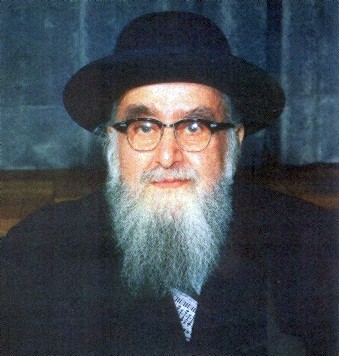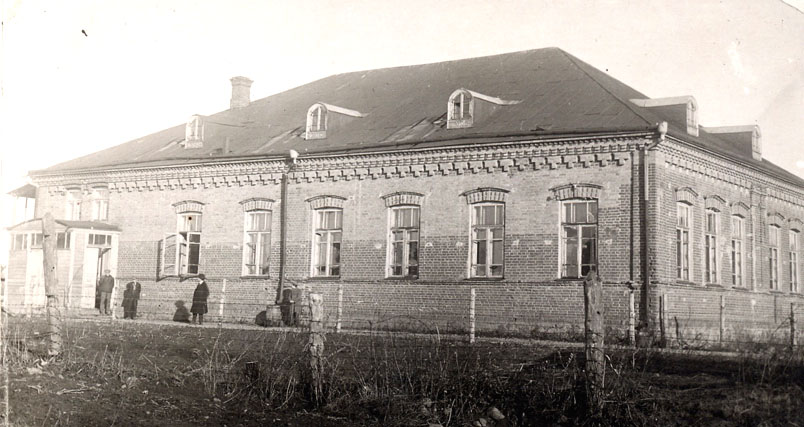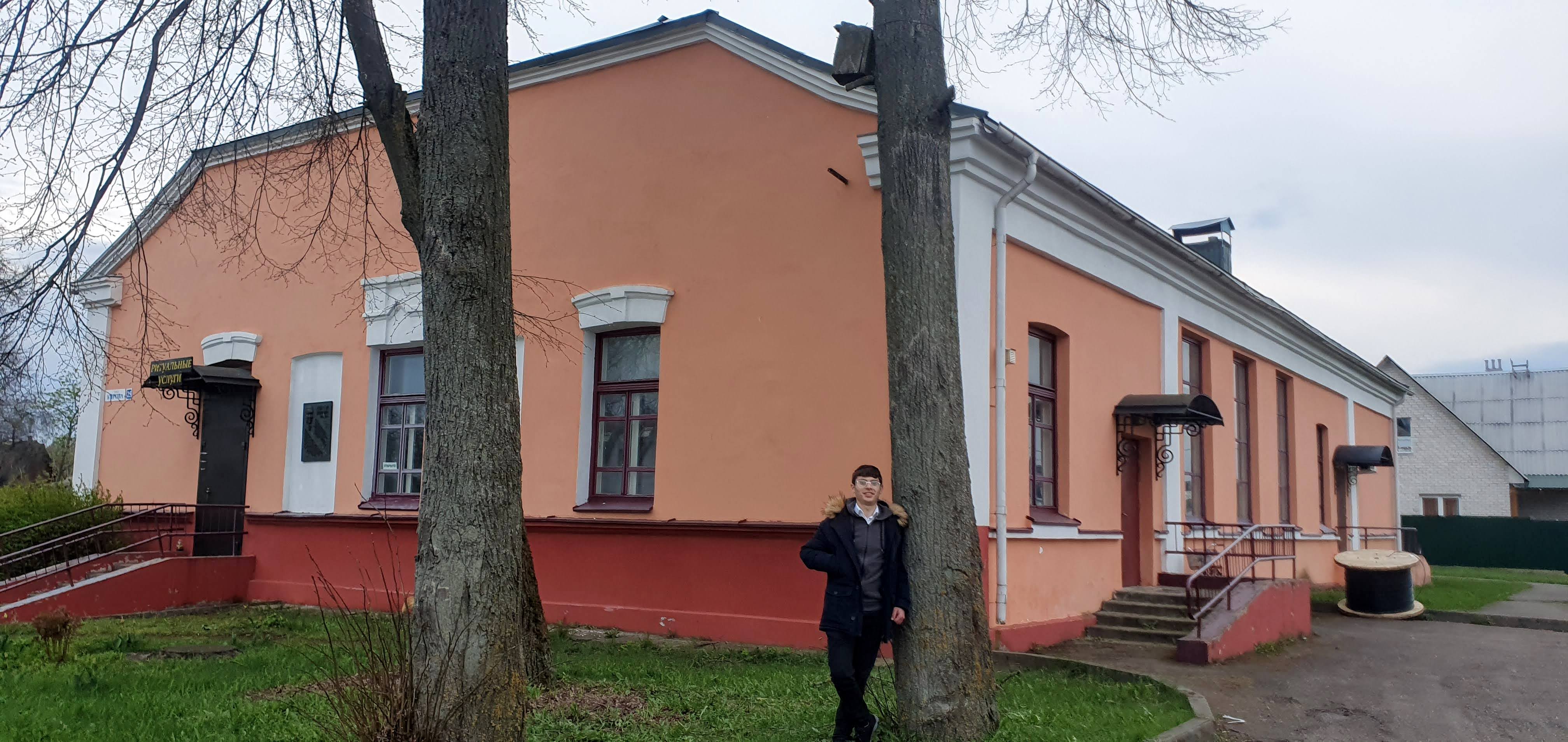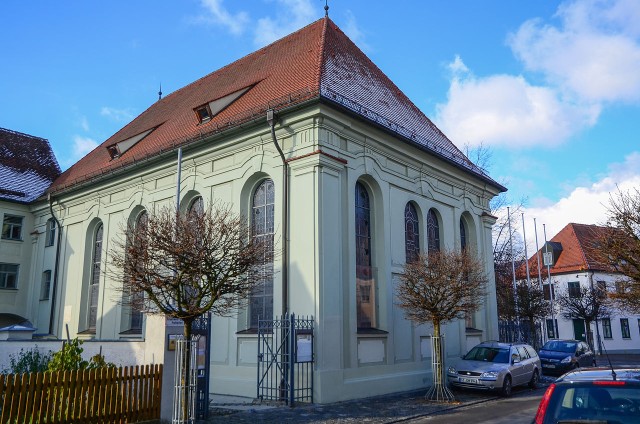| | NEWS
The Life and Life's Work of HaRav Shimon Schwab
by Rav Yosef Fleischman

For Part I of this series click here.
Editorial note: The article was written and published in 1995/5755 in the months following the petiroh of HaRav Shimon Schwab zt"l. This year on Purim Katan will be the 27th yahrtzeit.
The first part discussed Rav Schwab's family and background, with emphasis on his father R' Yehuda. Then the discussion moved to Rav Schwab's education, first in Frankfurt and then in the Lithuanian yeshiva at Telz.
Part II
In the winter zman of 1928-29 an event occurred which caused Rav Schwab to terminate his stay in Telz. The hanholo of the Yeshiva made a decision which did not sit well with the bochurim. When the bochurim took drastic steps to protest the decision of the roshei hayeshiva, Rav Schwab decided that Telz wasn't a place for him anymore. He felt that it wasn't the bochurim's task to meddle in the affairs of the roshei hayeshiva. He decided, therefore, not to return to Telz following Pesach of 1929.
In the summer of 1929, Rav Schwab, at age 20, started saying a shiur in Yeshivas Eitz Chaim in Montreux. As is always the case, meiHashem mitz'adei gever konanu — Hashem sends people to where He wishes. Rav Schwab had one purpose in going to Switzerland and Hashem had another.
While Rav Schwab was in Switzerland, in the summer of 1929, Reb Chaim Ozer the posek and manhig hador from Vilna, came to Switzerland for an extended stay. Having been a talmid of the Litvishe yeshivos and being fluent in Yiddish, qualified Rav Schwab for the role of shamash to Reb Chaim Ozer.
Being meshamesh Reb Chaim Ozer was another tremendous educational experience for Rav Schwab. Rav Schwab's developed mind and Reb Chaim Ozer's tremendous affinity for talmidei yeshiva were cause for tremendous affection between the two. Although Rav Schwab had started saying a shiur, he still yearned to continue learning. His first choice was to go to Eretz Yisroel to join Yeshivas Chevron. However, that summer the infamous Chevron massacre occurred and Rav Schwab was told by his father not to go.
Rav Schwab then asked Reb Chaim Ozer for a recommendation. Reb Chaim Ozer thought that the Mirrer Yeshiva, with its mashgiach Reb Yeruchom zt'l, would be the best choice.
On one occasion, when Rav Schwab took Reb Chaim Ozer on a walk in the Alps and pointed out the various mountains and their names, Rav Schwab expressed admiration for the great beauty of the mountains. Reb Chaim Ozer replied, "Isn't it better to see a Jew with a beard? Isn't that more beautiful?"
As Elul approached, Rav Schwab, heeding the advice of Reb Chaim Ozer, had his mind set on leaving Switzerland. One day Rav Schwab was resting and Reb Chaim Ozer came over to speak with him. When Rav Schwab saw Reb Chaim Ozer he tried to get up but Reb Chaim Ozer didn't let him and he came to sit on Rav Schwab's bed. He told Rav Schwab that he would like to stay a bit more and he asked if Rav Schwab could stay on a little while longer as his shamash.
Rav Schwab then made a decision which he regretted the rest of his life. In his great desire to get back into yeshiva learning, he turned down Reb Chaim Ozer's request.
The gemora in Brochos 9b states that gedola shimusho yoser milimudo — serving a Torah scholar is greater than learning Torah. According to one pshat in Tosafos in Kesuvos 17a if one is mevateil from shimush talmidei chachomim, even to do to a mitzvah like kevuras meisim, one is chayav benafsho!
*
The Mir Yeshiva prewar

Thus Elul 1929 ushered in a new period in Rav Schwab's life: the Mirrer Yeshiva. As Reb Chaim Ozer had expected, Reb Yeruchom made a tremendous impact and Rav Schwab felt very close to Reb Yeruchom.
Rav Schwab saw many similarities between Reb Yeruchom, a talmid of Kelm, and Rav Hirsch. In fact the Kelm Yeshiva's stress on perfection of middos was very close to Rav Hirsch's concept of mentsch Yisroel. Rav Schwab often quoted divrei Torah which he heard from Reb Yeruchom throughout his life.
The following incident was chosen by Rav Schwab (Selected Writings 286-7) to illustrate Reb Yeruchom's pedagogic style. He related, "I had borrowed money from the Mashgiach to purchase tickets to go home for Pesach. When I returned and repaid my debt, I thanked him for the loan. `How dare you thank me for a loan,' he chastised me. `Aren't you aware that it is ribbis devorim? Apparently in your scheme of things courtesy overrules halocho!' he said and continued to lecture me on the supremacy of halocho over custom, habit and instinct.
The following year, I again borrowed fare, and when I returned it afterwards, I did so in silence. `Where's your gratitude?' the mashgiach demanded. `Rebbi,' I protested, `last year you took me to task for thanking you and this year you scold me for not thanking you. What am I supposed to do?' `Of course you shouldn't say anything, but your feelings of gratitude should so overwhelm you that you should have difficulty suppressing the words. I see no such struggle!' Rav Schwab could see from this how one had to fine tune his middos.
At a recent hesped for Rav Schwab, Reb Leib Bakst, shlita, related how Rav Schwab was unique in the Mir. Having had, as we mentioned earlier, a highly developed intellect, Rav Schwab was the only one who would offer other explanations which didn't always agree with Reb Yeruchom's interpretations. While Rav Schwab greatly respected and revered Reb Yeruchom, that did not mean that he could not have a mind of his own.
We see in Selected Writings (287) one facet of general Eastern European Jewry that would be a deep influence on Rav Schwab's life. He writes, "The legacy of the kedoshim is one of dignified simplicity, respect for fellow human beings, and achdus, unity. The Polish Chassidim, Lithuanian Roshei Yeshiva, German activists and Hungarian kano'im all respected the lesheim Shomayim motives of the others — the fact that their colleagues were guided by pure intentions. They respected their otherness without yielding their own integrity. What a lesson for us to emulate!"
The Mir Yeshiva building last summer 
This is what Rav Schwab learned from Eastern Europe: anyone who is sincerely working lesheim Shomayim, is to be cherished. Whether he is working in a similar manner to you or not is not important — the intent is primary. However, the concept of lesheim Shomayim is a very demanding one. He would say that one must check if his lesheim Shomayim is lesheim Shomayim.
Many times Rav Schwab would appeal for simplicity. Time and time again he would come out against fancy affairs, and a fancy lifestyle in general. One should cherish the derech of hatzneya leches im Elokecho.
This highlights another important aspect of Rav Schwab's character. One constantly saw how Rav Schwab was always looking out for education. Dovid Hamelech states mikol melamdei hiskalti — from all my teachers I learned. This was Rav Schwab's derech — he learned lessons from many events, from an untold number of individuals. In fact, while we do not find it necessary in this article to repeat the stories which Rav Schwab told about the single Shabbos he spent with the Chofetz Chaim (since they are all well-known), we do feel it worthwhile to point out that the fact that the Torah world has learned much more from Rav Schwab's two days with the Chofetz Chaim that from many people who learned for years in Radin.
The reason is that Rav Schwab was constantly searching for truth, and he always had great respect for gedolim and couldn't get enough of the gedolim. He was drawn to a Rav Breuer, to a Reb Yeruchom, to Reb Yosef Leib Bloch, the Chofetz Chaim, Reb Chaim Ozer as well as other gedolim. In fact, Rav Schwab related how he noticed that, although he was so thirsty to hear anything from the Chofetz Chaim, he could see others out the window who did not care to come in and hear him speak, and merely waited impatiently for ma'ariv. They would look at their watches as if to say, "How much longer will the old man speak?"
Thus, we should realize that the fact that Rav Schwab had so much to recount to others is indicative of his longing soul — looking for guidance, truth, the path of the just. He internalized whatever he heard from the Chofetz Chaim. Thus, if the Chofetz Chaim said one should run to the call of "Mi laHashem eilai" then that was how he would react later on.
Rav Schwab writes (Selected Speeches 16-17, Selected Writings 276) that this one visit with the Chofetz Chaim also changed his perception of what emunah in bi'as Hamoshiach means. Until that point he had thought that "some time" Moshiach will come, but he did not anticipate Moshiach's immediate arrival. However, when the Chofetz Chaim explained that not thinking all the time that there is a distinct possibility that Moshiach will arrive today is a chisoron in emunah, then Rav Schwab's concept of what "tzipiso leyeshua" means changed. He was especially impressed by the fact that the Chofetz Chaim held it to be a sofeik hashokul (a fifty-fifty chance) if Moshiach would come that Nisan. In fact, this realization probably played a significant role in Rav Schwab's later authorship of the sefer Beis Hashoeva.
Another glimpse into the Rav's personality can be gleaned from the fact that, after having heard the Chofetz Chaim exclaim immediately after bentching that in ten years there will be a big fire, Rav Schwab's reaction was, "For ten years I repeated it, and waited fearfully, for its realization — until ten years later in 1940, when it started to come true."
We could say about the Rav that he was mekayem what it says in Pirkei Avos (1, 4): hevei shosei betzomo ess divreihem. This is also a striking kiyum of the posuk, ve'ish shomeya lonetzach yedaber (Mishlei 21:28) from what he heard in one weekend with the Chofetz Chaim, Rav Schwab had material to speak for many years thereafter.
Rav Schwab stayed on in the Mir for almost two years. Before leaving the Mir in 1931, he received smicha from HaRav Eliezer Yehuda Finkel, HaRav Elya Boruch Kamai (the rav of the town of Mir) and Rav Chaim Ozer zeicher tzadikim livrocho. He was thus set to return to Germany and fulfill the desire of his rebbe, HaRav Shlomo Breuer, to serve Yiddishkeit in Germany.
Serving Klal Yisroel
Rav Schwab's first position was as assistant to Rav Yonah Mertzbach (later one of the roshei yeshiva of Kol Torah in Yerushalaim) in Darmstat. He stayed in this job for two years until, in September 1933, he became the District Rav in Ichenhausen in Bavaria. As District Rav he was the rav of a number of surrounding small communities as well.
The District Rav of Ichenhausen
There are three significant aspects of Rav Schwab's career in Ichenhausen and all of these were influenced in some way by the long dark shadow of Nazism. One which seemed to have ended in dismal failure was the attempt to open a yeshiva. Of course, we know that onu ameilim umekablim schar, but in a material sense Rav Schwab's efforts were fruitless.
The historic shul in Ichenhausen

The Yeshiva in Ichenhausen opened in 1935. It was the product of about a year of intense activity to secure a dormitory, kitchen facilities and all the other facilities, and had attracted about 15 talmidim from various parts of Germany, but mainly from the vicinity. The students arrived in the morning and started learning maseches Sanhedrin in the beis midrash, which was located in Rav Schwab's house.
Later that same day, Rav Schwab received a message to go see the Mayor. He went to the Mayor's house, where he was informed that the Nazis ym'sh considered the act of opening a yeshiva to be a provocation. Rav Schwab replied that he had gotten permission from Gestapo Headquarters, but the mayor replied that their permission was besides the point and that the yeshiva would bear the consequences.
As Rav Schwab arrived back in the yeshiva, the bochurim, having been unaware of these events, came over to ask questions. However, Rav Schwab replied that he had to deliver an important message. He announced that since it's a matter of pikuach nefesh, all bochurim must return immediately to their homes since their safety could not be guaranteed. His quick action proved timely since, even as the bochurim headed for the evening train out of Schweben, Nazi thugs had already gathered and they met the bochurim with jeers and flying missiles. Thus, ended the yeshiva of one day.
The story does have a postscript though. When Rav Schwab was in Frankfurt about half a year later he was informed by someone that perhaps the reason for the yeshiva's failure was that it was against the Tzavo'o of Reb Yehuda Hachassid (one of the Baalei Tosafos) who had written some 700 years earlier, "ish be'eretz Schweben lo yigdal ne'orim sheyizku leyeshiva." Ichenhausen and the surrounding area is known as eretz Schweben. (In fact, the family name "Schwab" is due to the fact that the family hails from eretz Schweben.)
A commentator on the Tzavo'o explains that this statement of Reb Yehuda is like a prophecy, similar to the one of Rav Klonymos mentioned in Menochos 109b. He says that big gedolim like Reb Yehuda can reach such madreigas on their death beds. Thus Rav Schwab's abortive yeshiva experience served to prove the validity of Reb Yehuda's prophecy. Thus, at least there was a nechama purta.
Literary Output in Germany
Rav Schwab's literary endeavors at that time were twofold. In one sphere he wrote letters to various gedolim asking for direction, and on the other hand he published his view of Torah Im Derech Eretz in a book called Heimkehr Ins Judentum (Homecoming into Judaism).
The former activity is partially described in Ma'ayan Beis Hashoeva in Vayikra (18, 4). There, Rav Schwab writes that his efforts ended in an incomplete manner due to replies received from two gedolim for different reasons. Reb Leizer Yehuda Finkel, the rosh yeshiva of the Mir, thought that the machmir opinion, to shun secular wisdom, would be a gezeira she'ein hatzibbur yochol la'amod bo and therefore better kept undisclosed. On the other hand, the Gerrer Rebbe thought that Rav Schwab's effort in asking for other opinions was inappropriate in respect for Rav S. R. Hirsch. He, thus, wrote, "Remember that he [Rav Hirsch] was a tzaddik like a living mussar-sefer and one has to be extremely careful to honor him."
Thus, we have teshuvos written to Rav Schwab in answer to his question published in the Bircas Shmuel on Kiddushin as well as in the Kovetz Ma'amorim of Rav Elchonon Wassermann Hy'd, but Rav Schwab himself published neither those nor any of the other teshuvos he received.
On the other hand the abovementioned book was published. However, Rav Schwab later changed his views. Rav Schwab writes (Selected Speeches 236- 252) that he was very influenced at that time by the moral decadence of German culture which was evinced by the rise of National Socialism in the cultural society of Germany.
Rav Schwab, thus, explains in his book Heimkehr the differences between Rav Hirsch's philosophy and his own (at the time) Torah Only approach as being a result of two factors. One is that Rav S. R. Hirsch himself didn't mean his proposals as an ideal but rather as a stopgap method to prevent the spread of Reform. The second point is that Rav Hirsch was writing based on his perception of the elevated nature of German culture. This seemed to be true in Rav Hirsch's day but since then it had been revealed as mere wishful thinking. Rav Hirsch assumed that German culture would lead to hakoras Hashem on the part of the Germans. This may have seemed plausible in Rav Hirsch's day but had already been exposed in Rav Schwab's era as simply not the case.
Thus, Rav Hirsch could explain the dwindling nature of the porei hachag on Sukkos as being a result of the fact that gradually the differences between goy and Jew will diminish and all will embrace the rule of Hashem. From Rav Schwab's perspective, perhaps modern education could have been a tool to bring goyim closer to hakoras Hashem but so far nothing of the sort had happened.
This was 1934. However, when Rav Schwab was in the U.S. several years later, he realized that the first contention was incorrect. He often mentioned this, and he wrote in the above article in Selected Speeches that he was mistaken, that it was quite clear that Rav Hirsch viewed his philosophy as being a proper Torah derech for all time.
Continued...
|




